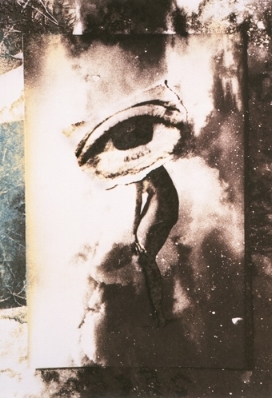Nonsilver Photographic Processes
The processes of cyanotype, van dyke, and gum bichromate printing were first discovered in the late 1800’s, as separate methods for creating photographic imagery. In my work I have combined the three techniques, with my own style of multiple printing to create modern nineteenth century type photographs. Each image I create has been exposed and processed from two to fifteen times. In essence, it takes from two days to three weeks to complete a single print. Thus, each print I create is unique, due to the complexity of the processes and my methods of layering images.
All of my work is contact printed, which means that an eleven by fourteen image has been printed from an eleven by fourteen sheet of film, or usually, from several sheets of film. First, I make an enlarged positive, then I make the negative. The enlarged negative is exposed in contact with water color paper, which I have sensitized with cyanotype, van dyke, or gum bichromate chemistry. I use a high uv light source to make the exposure. The exposed print is then processed and dried before another application can be made. I believe the time and craftsmanship involved in working with these techniques is an integral part of the finished print, enhancing the individuality of the image.
